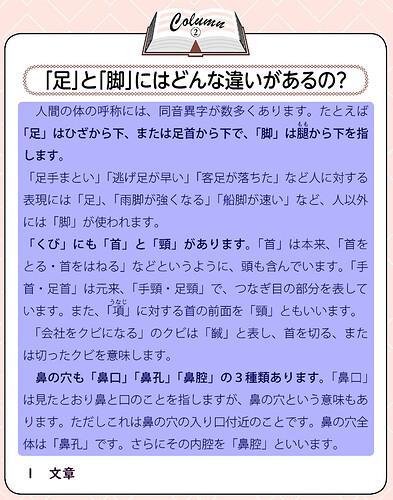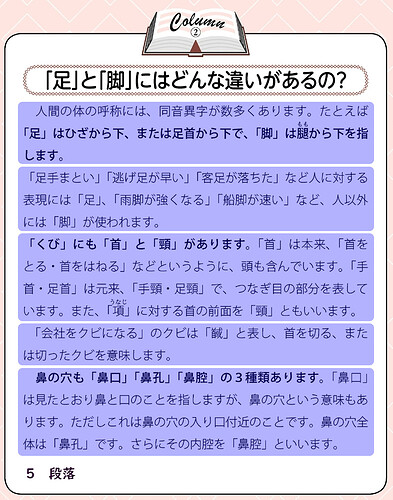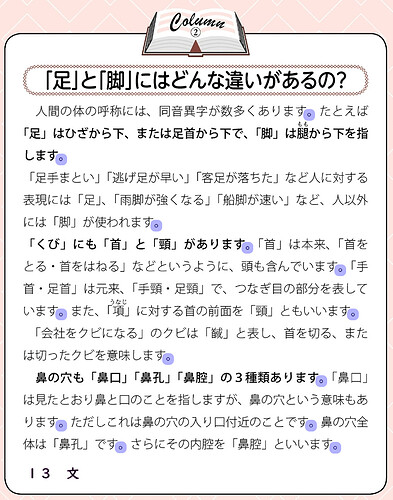Hi Everyone! 
 Just as a bit of a foreword, this is part one of a short series of articles I will be writing on the fundamentals of Japanese grammar. The types of things that will be getting covered are word types (particles, nouns, verbs, etc.), sentence structure, and most importantly… why these things matter.
Just as a bit of a foreword, this is part one of a short series of articles I will be writing on the fundamentals of Japanese grammar. The types of things that will be getting covered are word types (particles, nouns, verbs, etc.), sentence structure, and most importantly… why these things matter.
This series of articles will cover all of the same topics that would be covered by a Japanese person in middle school, the period in which native speakers learn all the core components that make up modern day Japanese, before diving into historical Japanese in high school. In short, middle school contains most of the things you actually need to know to survive. So, without drawing out this introduction any longer, let’s dive straight into it. 
言葉の単位 (The core units of speech)
In Japanese, writing/speech can be broken down into 5 distinct parts. These parts each have a unique name, and a unique way to be identified. These distinctions are refered to as 単位, which basically means ‘unit’, or ‘denomination’. Let’s have a look at the 5 units that make up Japanese, in order from the largest, to the smallest.
文章
This structure can be thought of as similar to ‘composition’ in English. It does not matter whether it is one sentence, one paragraph, or one entire page. A 文章 is any piece of writing in its entirety from start to finish that continues without stopping.
(Here we can see that this particular page has one complete piece of writing that would be classified as one 文章)
段落
A 段落 may be identified in a very similar way to individual paragraphs in English. The easiest way to identify a 段落 is through that they will usually start with a small indentation on the first line. They can often be made up of several individual sentences, or perhaps just one.
(Following the indentations that we can find at the beginning of each segment, we can now see that this 文章 is further divided into 5 段落)
文
文 is the closest to what we would identify as a ‘sentence’ in English. It is an individual group of words that end in a full stop.
(By simply counting the full stops, we can see that this 文章 is comprised of 13 文)
文節
A 文節 is a unique unit found within Japanese that has no direct counterpart in English. Basically, the easiest way that it can be described is as the individual breaks in a sentence within which filler words such as ね or さ could be inserted. Let’s take a look at an example… Maybe not a whole page this time, I don’t want to spend all night highlighting! 
今日は(ね・さ)東京に(ね・さ)行く(ね・さ)。
This gets a little complex in longer sentences, and there are a few things to look out for, so we will cover 文節 in more detail in its own article. 
単語
The last and smallest unit into which Japanese can be broken into are 単語. These units are equivalent to ‘words’ in English, and includes everything from individual nouns, to particles, verbs, adverbs, and everything else.
Well, that’s all for today! Now we know the 5 basic denominations that make up Japanese.
In the next article, we will take a detailed look at 文節, the special rules that apply to them, and how we can use them to our advantage when speaking or creating our own sentences.




 That’s my big takeaway from this post. They may not have a direct equivalent in English, but they do remind me a lot of the formal definition of a ‘phase’ in English, usually as a sub-unit of a complete sentence.
That’s my big takeaway from this post. They may not have a direct equivalent in English, but they do remind me a lot of the formal definition of a ‘phase’ in English, usually as a sub-unit of a complete sentence. ). I definitely 100% recommend it to anyone that can follow along. Gifted teacher
). I definitely 100% recommend it to anyone that can follow along. Gifted teacher 